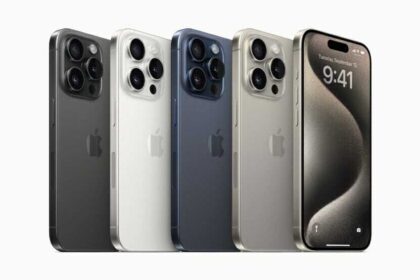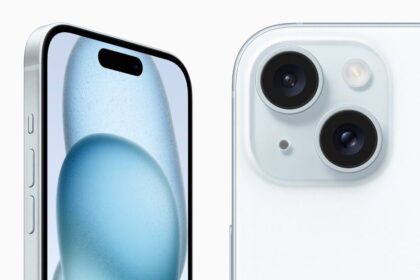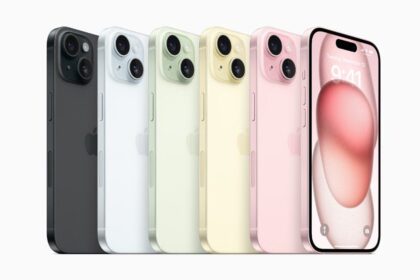Touch ID vs Face ID: what are the differences and similarities?
AND WHAT ARE THE PROS AND CONS?
Which is better, an iPhone with Touch ID or Face ID? What are the differences and benefits of facial recognition vs. a fingerprint scanner? In this article, we compare Touch ID and Face ID and look at the differences and similarities between
Touch ID and Face ID
Now that theiPhone SE 2020 has been released, you may doubt whether you should still invest in an iPhone with Touch ID.
Touch ID will continue to exist on the iPhones and iPads in the coming years and may even come back as an extra option under the screen. It is mainly about what you like yourself!
Apple uses two different methods to unlock your Apple device:Touch ID orFace ID . Touch ID is Apple’s name for the fingerprint scanner, while the face recognition is called Face ID. Both have advantages and disadvantages.
Explanation
Differences and similarities
Pros and cons
Face recognition with Face ID can be found on recent devices since the iPhone X and iPad Pro 2018 while on other devices you can find Touch ID. Even now, devices with Touch ID are still being made, such as the latest iPads and theiPhone SE 2020 .
What are Touch ID and Face ID?
Touch ID and Face ID are both biometric authentication methods that provide access to your Apple product. In the case of Touch ID, it scans your fingerprint: if you put your registered finger on the home button of your iPhone or iPad, you will have access to all functions and data.
Face ID makes a scan of your face before you can unlock the iPhone or iPad . Both methods replace the passcode you set to lock your device. Touch ID and Face ID ensure that all your data is stored securely, so that other people cannot access your device and view your photos, contacts and other data.
Touch ID is the fingerprint scanner found in the iPhone, iPad and some MacBooks. It is used to unlock your device and authorize purchases and the like. Here’s how it works.
Apple’s facial recognition on iPhone
The iPhone has been equipped with Face ID, Apple’s own face recognition, since the iPhone X. In this article you will find the complete Face ID explanation: how it works, whether it also works with apps and whether it is safe.
The purpose of both methods is therefore the same. That does not alter the fact that there are a number of differences and similarities between Touch ID and Face ID.
Touch ID and Face ID differences
These are the differences in brief:
- Touch ID works with your finger, Face ID with your face.
- Face ID only works in portrait mode ( iPad Pro 2018 excluded).
- Face ID works with two faces (via an alternative appearance), Touch ID with five fingers.
- Face ID is more secure than Touch ID.
The most obvious difference is the method of identification. With Touch ID you place a registered finger on the home button. The advantage of this is that it doesn’t matter how you hold your device: vertically, horizontally or at an angle. As long as you have properly registered your finger, you can place it on the home button in many ways. The only condition is that your skin must be in contact with the button itself. Touch ID also works when your device is flat on the table or with the screen away from you.
With Face ID, you always have to keep your device in portrait mode. Face ID will not work if your iPhone is in landscape position, unless you tilt your head ninety degrees. In addition, your face must always be in front of the TrueDepth camera . You cannot use Face ID if your iPhone is flat on the table, unless you hang your face above the screen.
Another significant difference is that Face ID works with up to two faces. You use the Alternative appearance option to scan your partner’s face, for example. It is not possible to register more people.
This is possible with Touch ID. You can register up to five different fingers of different people. For example, some people register a finger of their partner so that they always have quick access in case of emergency and do not have to remember a passcode.
The last key difference is that Face ID is a lot safer, according to Apple. The chances of unlocking someone else’s device with Face ID are 1 in 1 million. With Touch ID, that chance is 20 times greater, namely 1 in 50,000. Using Face ID is therefore secure than Touch ID, although you are well secured with both methods. The chance that someone can unlock your iPhone with his finger is still very small.
Moreover, with Face ID you are slightly better protected against certain situations, for example during a robbery. For Face ID to unlock your device, you look at the screen with your eyes open thanks to the attention function . This is more difficult to force than grabbing someone’s finger and pressing the home button. On the other hand, Face ID can be used in a more sneaky way with someone other than Touch ID, because the latter requires an action.
Touch ID can be found on the iPhone models from 2013. The iPad models from 2014 are also equipped with Touch ID. You can also find the fingerprint scanner on the MacBook Pro with Touch Bar and the MacBook Air 2018 and newer. Face ID is only available on iPhone X and newer and iPad Pro 2018 and newer.
Touch ID and Face ID similarities
These are the similarities in brief:
- Secure and unlock your device without entering a passcode.
- Identifying and logging into apps (e.g. banking apps).
- Data is stored securely
- Use for payments with Apple Pay.
The similarities between the two methods mainly focus on one goal: to secure your device and protect your personal data. If your face or finger is not recognized, you will fall back on entering your passcode. In addition, apps can work together with both Touch ID and Face ID. In most cases, Face ID works automatically if an app is also adapted for Touch ID. A developer must add this biometric login method himself. Most banking apps let you log in and send payments with Touch ID or Face ID. This also applies to many password manager apps .
In addition, you use Face ID and Touch ID to approve payments via Apple Pay . This makes you the only one who can pay with your iPhone or iPad (or your partner that you also registered in the Touch ID or Face ID settings). As an alternative to Face ID and Touch ID you can also use the passcode.
The data of registering your fingers and face are both stored in a separate secure part in the chip of your Apple device, called the Secure Enclave. Other parts of the system cannot access this data, so your fingerprint or face does not just end up on the street. However, there is a difference: Touch ID does not store images of your fingerprint, but Face ID does (although they are made unrecognizable). Apple does this to ensure that Face ID works even if your face changes slightly. It is therefore not necessary to rescan your face.
What are the pros and cons of Touch ID and Face ID?
From the list of similarities and differences, you could already see that both techniques have their advantages and disadvantages. In short, these are the pros and cons of Touch ID and Face ID:
Touch ID benefits
- Register multiple fingers (can also be done by other people)
- It doesn’t matter how you hold your device, as long as your finger comes in contact with the home button
Touch ID disadvantages
- Does not work with gloves
- Often does not work if fingers are dirty or wet
- With Touch ID you can lock your iPhone, iPad and Mac with your own fingerprint.
Face ID benefits
- Often works hands-free (unlocking requires swiping)
- It is safer
- Works with two faces (from iOS 12 )
Face ID disadvantages
- Does not work with certain sunglasses ( most sunglasses work )
- Does not work if the sun shines brightly behind you.
and that covers everything about differences between Face ID in touch ID on iPhone and iPad.
If you enjoyed reading this article, please share it with others. We also have plenty of other articles that I suggest you check right now.









